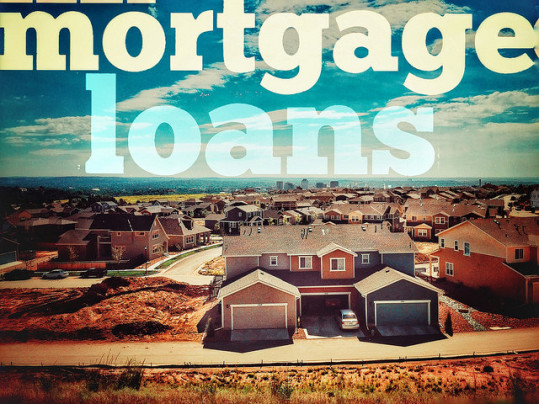According to the Mortgage Bankers Association’s Weekly Applications Survey, average mortgage rates were down across all loan categories last week, including 30-year fixed-rate loans with both conforming and jumbo balances, loans backed by the Federal Housing Administration, and 15-year fixed-rate loans. The decline provided a brief break from interest rates’ otherwise upward trend. Joel Kan, an MBA economist, told CNBC the slight drop in rates was driven by concerns about the global economy. “Mortgage rates dipped slightly last week driven mainly by concerns about global growth,” Kan said. “The refinance index continued to slip and was at its lowest since 2008, as was the refinance share of applications.” Refinance activity has fallen as rates have moved higher. This is to be expected as refinance demand is generally more sensitive to fluctuations in rates. Demand for loans to buy homes, on the other hand, remains 3 percent higher than at the same time last year. The MBA’s weekly survey has been conducted since 1990 and covers 75 percent of all retail residential mortgage applications. More here.
Archive for May 2018
Homeowners Get A Better Grip On Home Values
The mortgage process is really just about verifying and documenting the various aspects of the home’s sale. Whether it’s verifying the buyer’s income and debts or that the house doesn’t have a major problem with its foundation, there are a number of items that are typically among the checklist of things that need to be done before the deal is closed. The appraisal is one of them. In short, an appraisal provides a professional evaluation of the home’s worth. Based on the size of the home and lot, as well as the prices of similar homes sold in the area, an appraiser will determine whether or not the home’s price is fair. Sometimes, when a homeowner has an unrealistic idea of their home’s value, a lower-than-expected appraisal can be an issue. For that reason, a recent report tracking the difference between homeowners’ perception of their home’s worth and its appraised value is encouraging. That’s because, it found that homeowners’ expectations and actual appraised value are more in line than they have been in more than three years. In fact, nationally, appraised values were just 0.33% off homeowner estimates in April. More here.
Americans’ Housing Confidence Hits New High
Before anything else, the decision to buy or sell a house starts with a feeling. Maybe it’s feeling too cramped in your current house or feeling financially secure enough to trade up, but, whatever the case, you have to feel something. Maybe most importantly, you have to feel confident that it’s the right time for you and that you’re in a good position to move. That’s why Fannie Mae takes a monthly measure of Americans’ confidence in the housing market and their personal financial situation. And, according to their most recent release, Americans are feeling good. In fact, the Home Purchase Sentiment Index hit a new all-time survey high in April. Doug Duncan, Fannie Mae’s chief economist, says consumers’ attitudes about the housing market are resilient, despite some challenges. “The latest HPSI reading edged up to a new survey high, showing that consumer attitudes remain resilient going into the spring/summer home buying season,” Duncan said. “High home prices and good economic conditions helped push the share of Americans who think it’s a good time to sell to a fresh record high. However, the upward trend in the good-time-to-sell share seen since last spring has done little to release more for-sale inventory.” More here.
High-End Neighborhoods Make Most Popular List
When searching online listings for homes to buy, it is sometimes difficult not to wander outside of your price range for a look at houses you’d love but can’t afford. This is true no matter what your particular price range might be. There will always be a house just out of your reach that’ll catch your curiosity. And the internet has made it easier than ever to get a glance of the high-end homes you’d previously only be able to see from the road. Proof of this can be found in a recent analysis of the country’s most popular neighborhoods based on page views. The top 20 features the nation’s most desirable addresses in some of the most exclusive zip codes. The Oaks in Los Angeles was the top neighborhood, followed by places like Tuxedo Park in Atlanta, Presidio Heights in San Francisco, and New York’s Crestwood neighborhood. But, in this case, the number of views a particular house or neighborhood receives isn’t likely to reflect an increase in the number of potential buyers. More likely, these neighborhoods reflect – not where Americans are buying homes – but where they dream of buying homes. More here.
What Is The Best Time To Sell Your Home?
If you’ve ever sold a house or are currently thinking of selling, you know there are a lot of factors that play a role in deciding when it’s the right time to list your home. Most of the decision-making process will rightly focus on your personal goals, finances, and plans for the future. But there is also the question of what time of year is the best for selling a house. Well, according to an analysis of nearly 15 million home sales that occurred between 2011 and 2017, ATTOM Data Solutions has narrowed the best time to sell down to, not just the month, but the exact date when it’s best to sell a home. Their study shows that homeowners who sold during the month of May realized the biggest premiums over estimated market value. In fact, the average seller premium was 5.9 percent. But, if you’re looking for the single best day to sell a house, the results says it’s June 28. Sellers who sold on that date saw an average premium of 9.1 percent. More here.
Loans To Buy Homes Up 5% Over Last Year
According to the Mortgage Bankers Association’s Weekly Applications Survey, the number of Americans requesting loans to buy homes last week was 5 percent higher than the same week one year ago – indicating that there is a high level of buyer demand around the country. But though buyers are active in the market, they are also keeping a close eye on affordability. And last week, mortgage rates were also up. In fact, rates rose across all loan categories, including 30-year fixed-rate loans with both conforming and jumbo balances, loans backed by the Federal Housing Administration, and 15-year fixed-rate mortgages. The increase was driven by confidence in the overall economy. “Market sentiments about strong domestic growth and higher inflation in the U.S. pushed the 10-year Treasury to the 3 percent mark last week, the first time since 2014 that yields have hit that level,” MBA economist, Joel Kan, told CNBC. In other words, continued economic optimism is responsible for increasing rates. The MBA’s weekly survey has been conducted since 1990 and covers 75 percent of all retail residential mortgage applications. More here.
Compromise Isn’t Just For Home Buyers
With buyer demand high and the number of houses for sale low, today’s market is favorable for homeowners who want to sell. But though they’re likely to find interested buyers, homeowners shouldn’t expect that everything will always go their way. In fact, a home’s sale almost always involves a negotiation and home sellers, just like buyers, should expect to have to compromise here and there. For example, 76 percent of sellers said they had to make at least one concession when selling their home, according to one recent survey. That means, even in markets that favor sellers, homeowners should have some flexibility when it comes to working out the details of the final sale. Home sellers should also be prepared to make some pre-sale improvements to their house, as the vast majority of recent home sellers also said they had to fix up their home before listing it. In short, regardless of how hot your local market is, you still have to get your house in shape and work with your home’s buyer to ensure the sale is a success on both ends. More here.







